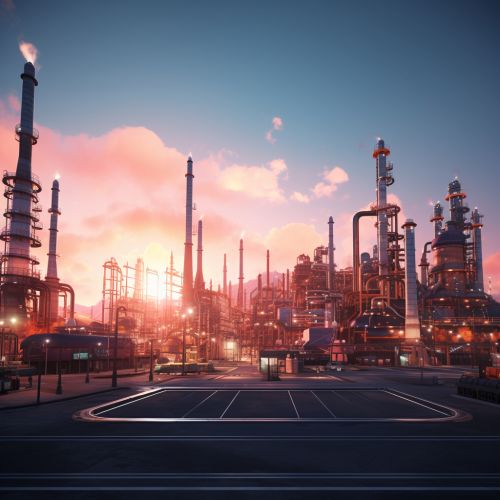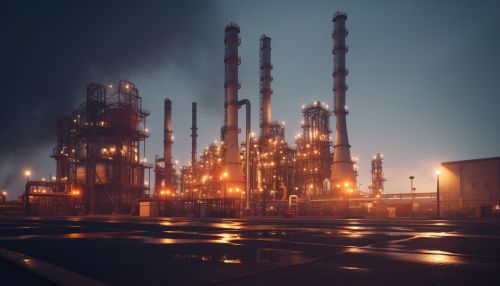Post-combustion capture
Introduction
Post-combustion capture (PCC) is a carbon capture technology that is used to reduce the amount of carbon dioxide (CO2) emitted into the atmosphere from power plants and industrial processes. The technology involves capturing CO2 from the flue gases after the combustion process. This is a significant area of research in the field of climate change mitigation, as it offers a potential solution to reduce the carbon footprint of fossil fuel-based power generation.
Process
The process of post-combustion capture involves several steps. Firstly, the flue gases are cooled down to facilitate the capture of CO2. The cooled gases are then passed through an absorber column, where a chemical solvent absorbs the CO2. The solvent is typically an amine-based compound, such as monoethanolamine (MEA). The CO2-rich solvent is then heated in a stripper column, which releases the CO2 gas. The stripped solvent is recycled back to the absorber column, while the captured CO2 is compressed and prepared for transport and storage.


Advantages and Disadvantages
Post-combustion capture has several advantages. It can be retrofitted to existing power plants, which makes it a practical solution for reducing emissions from the existing fleet of power plants. Moreover, it does not require modifications to the combustion process, which means that it does not affect the efficiency of the power plant.
However, post-combustion capture also has some disadvantages. The process requires a significant amount of energy, which can reduce the overall efficiency of the power plant. Moreover, the solvents used in the process can degrade over time, which can increase the operational costs. Furthermore, the process requires a large amount of water, which can be a concern in water-scarce regions.
Research and Development
There is ongoing research and development in the field of post-combustion capture to improve the efficiency and reduce the costs of the process. This includes the development of new solvents that have a higher CO2 absorption capacity and are more resistant to degradation. Moreover, researchers are exploring the use of advanced process configurations, such as multi-stage absorption and stripping, to reduce the energy requirements of the process.
Future Prospects
The future prospects of post-combustion capture depend on several factors, including the progress in research and development, the availability of funding for large-scale demonstration projects, and the implementation of policies that put a price on carbon emissions. With the increasing urgency to mitigate climate change, it is expected that the demand for carbon capture technologies, including post-combustion capture, will increase in the coming years.
